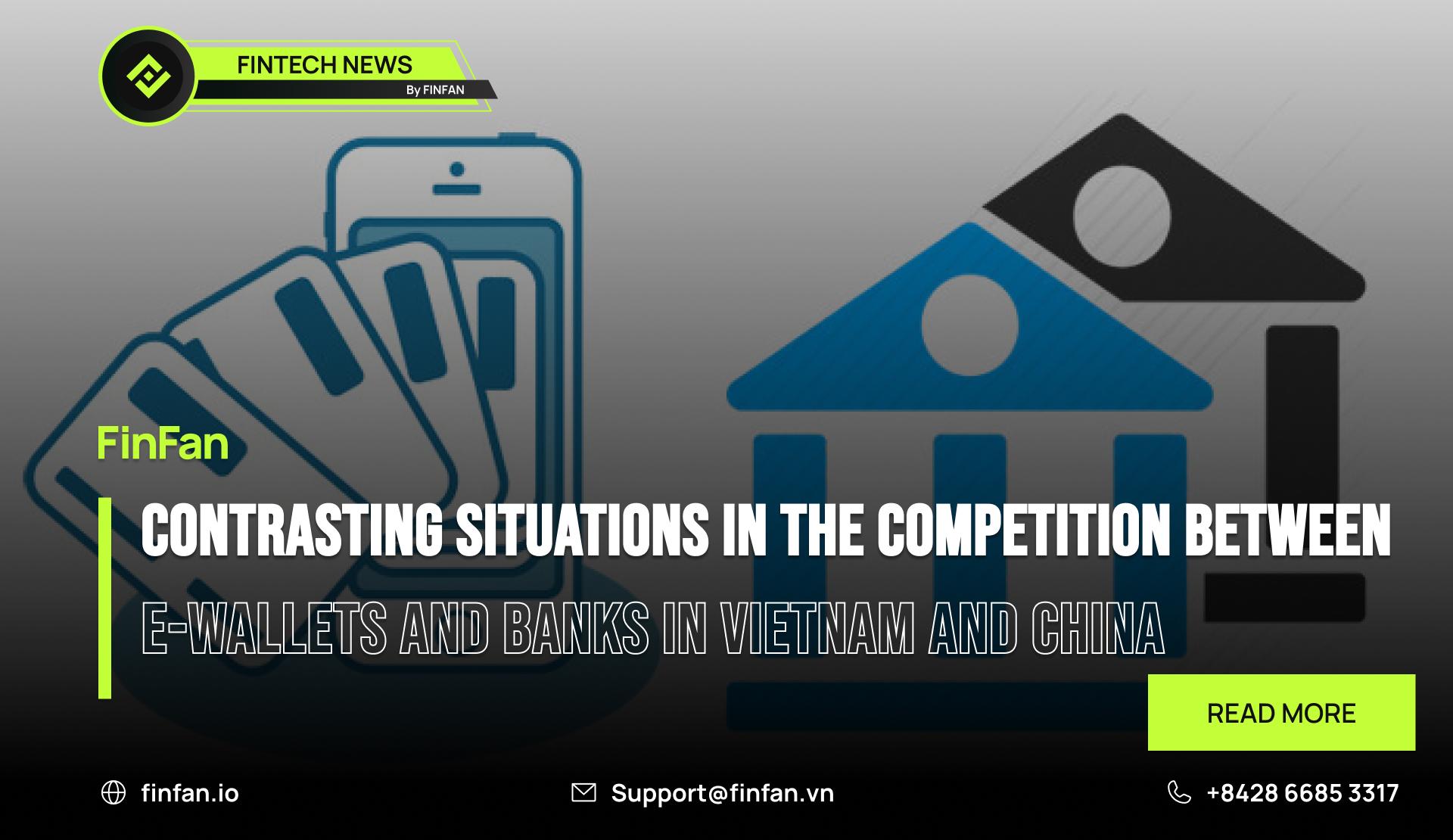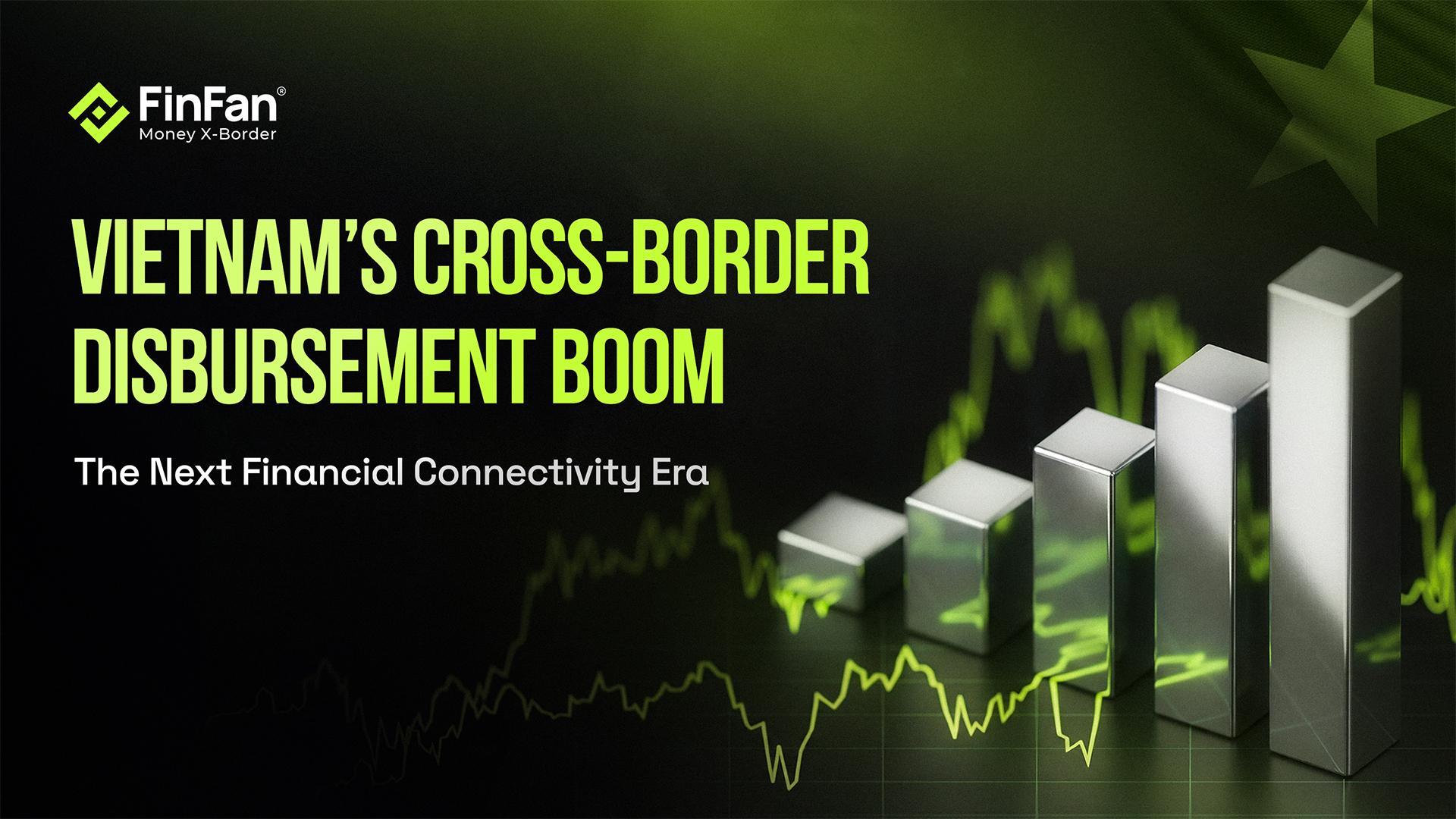Contrasting Situations in the Competition Between E-wallets and Banks in Vietnam and China

China and Vietnam, two countries with similar political systems and nearly identical economic contexts, have recently exhibited significant contrasts in the development of fintech amidst the competition between banks and fintech companies.
How do these differences in the competition between banks and fintech manifest? Let us delve into this issue with FinFan through the following article.
Top 8 Similarities in the Development of E-Wallets in Vietnam and China
The development of e-wallets in both countries shares 8 key similarities:
1. Government Encouragement and Regulation:
In both Vietnam and China, governments have actively encouraged the use of e-wallets as part of broader initiatives to promote cashless economies.
Regulatory frameworks have been established to ensure the security and integrity of e-wallet transactions, aiming to build public trust and foster widespread adoption.
As FinFan mentioned in the previous article about the development of payment technology in Vietnam through various stages since the country's reunification, the Vietnamese government has consistently strived to find solutions that support new payment technologies to facilitate international integration.
E-wallets are no exception. Recently, the State Bank of Vietnam introduced new regulations on electronic money to further develop this sector.
Read more:
. Government Initiatives and Regulatory Support for Fintech in Vietnam
Similarly to Vietnam, the Chinese government has also consistently facilitated the development of payment technology companies. This is exemplified by the remarkable growth of e-wallets in China, with AliPay and WeChat Pay being the most prominent examples.
2. Rapid Adoption Driven by Mobile and Internet Penetration:
The widespread use of smartphones and increased internet penetration have significantly driven the adoption of e-wallets in both countries.
Users find the convenience of mobile-based payments appealing for a variety of everyday transactions, from retail purchases to utility payments.
3. Integration with E-commerce
E-wallets in both Vietnam and China are deeply integrated with the e-commerce ecosystem, facilitating seamless online transactions.
Major e-commerce platforms often partner with or develop their own e-wallets, providing users with efficient and secure payment options.
A prime example is the recent collaboration between ride-hailing companies like Grab and Gojek in Vietnam with MoMo and ZaloPay to offer exclusive benefits to customers using their integrated services.
Similarly, the introduction of ShopeePay aims to provide the best deals for customers on the Shopee e-commerce platform.
A similar scenario also unfolds for Chinese consumers, where the two giants, AliPay and WeChat Pay, are deeply integrated with numerous major e-commerce platforms in China.
WeChat Pay collaborates with platforms like Doyuin, while AliPay is backed by the powerhouse Alibaba, providing seamless payment experiences for Chinese consumers across various e-commerce platforms.
4. Comprehensive Financial Ecosystems
Both countries have seen e-wallets evolve into part of larger fintech ecosystems, offering a wide range of financial services beyond simple payments. These services include peer-to-peer transfers, loans, investment opportunities, and insurance.
The integration of these additional services has made e-wallets an integral part of users' financial lives.
5. Focus on Financial Inclusion
E-wallets in Vietnam and China play a crucial role in enhancing financial inclusion, providing banking and financial services to underserved populations, particularly in rural and remote areas.
By offering an accessible and user-friendly alternative to traditional banking, e-wallets help bridge the financial inclusion gap.
6. Promotion of Cashless Payments
Both countries have actively promoted cashless payments, with e-wallets playing a central role in this transformation.
Government campaigns and incentives encourage merchants and consumers to adopt e-wallets, reducing reliance on cash and improving transaction efficiency.
7. Innovative Technologies
The development of e-wallets in both Vietnam and China leverages cutting-edge technologies such as QR codes, NFC (Near Field Communication), and biometric authentication to enhance security and user experience.
Continuous innovation in technology helps e-wallets stay competitive and meet evolving consumer needs.
As FinFan previously mentioned in their article, the State Bank of Vietnam actively promotes the development of the latest payment technologies such as QR codes. Recently, MoMo introduced an update to the market where user identity verification utilizes advanced NFC technology. Additionally, MoMo aims to further develop NFC payments through this super app in the future.
Read more:
Meanwhile, in the Chinese market, contactless payments have long been elevated to a new level where customers can (without fingerprint recognition) make payments at convenience stores using their e-wallets and palm.
8. Partnerships and Collaborations
E-wallet providers in both countries often collaborate with banks, telecom companies, and retail businesses to expand their user base and service offerings.
These partnerships enable e-wallets to offer a broader range of services and reach more customers, driving further adoption.
Contrasting Situations in the Competition Between E-wallets and Banks in Vietnam and China
While there are similarities in the direction of e-wallet development, the competition between e-wallets and banks in Vietnam and China exhibits several similarities, but also important differences due to the specific market characteristics and technological development levels in these two countries.
Situation in China
E-Wallet Penetration
China is one of the pioneering countries in the use of e-wallets. E-wallets such as Alipay (by Alibaba) and WeChat Pay (by Tencent) have become the primary means of payment, surpassing bank cards.
E-wallets are widely used not only in online shopping but also in daily transactions such as market purchases, dining out, and paying utility bills.
Replacement of Traditional Banks
Many traditional banking services such as money transfers, loans, and investments have been replaced by e-wallets. Fintech companies have created applications and services that are more convenient than traditional banks.
E-wallets are also linked to other financial services such as insurance, investment, and consumer credit, creating a comprehensive financial ecosystem.
Policies and Regulation
The Chinese government has implemented strict measures to ensure financial safety and stability, while still supporting the development of financial technology.
Recently, the two major e-wallet giants in China, WeChat Pay and AliPay, have been experiencing significant losses as the government has mandated a reduction in their market share in mobile payments, a situation unprecedented in the past.
The primary purpose of this requirement is mainly aimed at regulating QR code payments, which have been increasingly popular in China.
This move has shaken the entire e-wallet industry, with 185 non-bank payment organizations in China, which constitute the largest cashless payment economy in the world with 943 million users and the with a scale reaching up to 12 trillion USD (of which, transactions via QR code scanning alone have reached 15.59 trillion Chinese Yuan) in Q1-2024.
Situation in Vietnam
Development of E-Wallets
E-wallets in Vietnam are in a rapid development phase with many prominent applications such as MoMo, ZaloPay, and ViettelPay.
Although the number of users has increased rapidly, the usage rate of e-wallets remains lower compared to China, especially in rural areas.
However, things are gradually looking more optimistic as recent data indicates that more than half of Vietnam's population will have an e-wallet account by the end of 2024.
Read more:
. There Will Be 50 Million E-Wallets Operating in the Vietnamese Market This Year (2024)
Traditional Banks Still Predominate
Despite the remarkable growth in recent years, the Vietnamese e-wallet market still faces intense competition.
The industry comprises over 50 e-wallet companies, but the market share is predominantly concentrated among three major players: MoMo, ZaloPay, and VNPay. Additionally, ShopeePay focuses mainly on addressing payment issues for Vietnam's largest e-commerce platform, Shopee.
Moreover, the e-wallet market share in Vietnam is also fiercely contested by services from major banks.
Traditional banks in Vietnam continue to play an important role in the financial system, particularly in services such as lending and savings.
Furthermore, many banks have started cooperating with fintech companies to provide more convenient payment services through mobile apps and internet banking.
Recently, in an interview with CafeBiz, a leading electronic business news site, a financial expert who has worked at Payoo, SmartPay, and Sendo identified five reasons why e-wallets are losing ground to banks.
According to Mr. Nguyên, there are five reasons why e-wallets face increasing competition:
. Rapid Convergence of Payment Processing: The gap between e-wallet and bank payment processing is narrowing quickly as banks start from core payment systems and rapidly build applications, leading to high user growth rates.
. Swift Adoption of VietQR: The emergence and rapid popularity of VietQR have diminished the effectiveness of QR codes used by e-wallets. E-wallets have had to adapt by incorporating VietQR, as seen with MoMo and ZaloPay.
. Growing Ecosystem of Bank-Integrated Solutions: There is a strong development of payment processing solutions that do not require e-wallet licenses and are directly integrated with banks, such as ATOM, Casso, SePay, HeNo, and GenZi.
. Stricter Security Regulations: New regulations, such as Decision 2345, impose tighter security requirements, making e-wallets increasingly dependent on banks for user experience.
. Higher Bank Profits and Investment: Banks generate significantly higher profits (in the trillions of VND per year) compared to e-wallets, enabling them to invest more heavily in their services.
Source: CafeBiz
Government Policies and Support
The Vietnamese government is building a legal framework for fintech and e-wallets, aiming to promote development while ensuring the financial system's safety.
Policies encouraging cashless payments are being vigorously implemented.
Future of Competition Between E-wallets and Banks in Vietnam and China
In China
E-wallets may continue to expand and strengthen their position, but they will face increasingly stringent regulations from the government to control financial risks.
In Vietnam
The cooperation between banks and fintech is expected to continue increasing, with traditional banks maintaining an important role but increasingly integrating with new technology services to provide a better customer experience.
Additionally, Mr. Nguyên suggests several feasible directions for e-wallets in the near future:
. Higher Automation for Financial Needs: This includes quick loans, overdrafts, merchant cash advances, and daily wage advances . . Integrating Ecosystems into Banking Apps: Examples include Taxi/VNShop from VNPAY, Urbox's loyalty programs, or Accesstrade.
. Developing Hardware and APIs with Banks' Open APIs: This involves products like SmartPOS and mPOS.
. Handling Payment Infrastructures: Solutions like VETC and EPASS for emerging needs such as metro systems.
Mr. Nguyên notes that these directions can be pursued by other intermediary technology companies without needing an e-wallet license, thus making the competitive environment increasingly open.
FiinGroup projects that by the end of this year, there will be about 50 million active e-wallets in Vietnam, nearly a 40% increase from 2023. However, most leading players are still in a "burning money" phase.
According to FiinGroup, despite impressive growth figures, e-wallets are still engaged in a costly race to attract and retain customers. As a result, leading providers with millions of users, such as MoMo and ShopeePay, continue to incur losses despite growing net revenue.
Source: CafeBiz
Conclusion Regarding the Competition Between E-wallets and Banks in Vietnam and China
The development of e-wallets in Vietnam and China shows many similarities, from government support and rapid adoption driven by mobile technology to integration with e-commerce and a focus on financial inclusion.
Both countries are leveraging technological innovation to promote cashless payments and create comprehensive financial ecosystems. These parallels highlight the shared trajectory of e-wallet growth in two dynamic and rapidly evolving fintech landscapes. Although e-wallets are developing strongly in both countries, the competitive landscape between e-wallets and banks in China has entered a new phase with the dominance of fintech platforms.
Meanwhile, in Vietnam, this process is ongoing with numerous opportunities for collaboration and development between traditional banks and fintech companies.
This article was curated and authored by FinFan's market research and development team, alongside our marketing department.
About FinFan
FinFan is a cross-border embedded financial services company that focuses on mass disbursement, fund collection, card processing, IBAN, and digital APMs solutions, which can provide valuable input and integration on and for the same.
FinFan is already integrated with almost the world's well-known MTOs, PSPs, switch, and core fintech platforms such as Money Gram, Thunes, Qiwi, Remitly, World Remit, Bancore, PaySend, Terrapay, Ria Money Transfer (Euronet), Dlocal, Ripple, TripleA, FoMo Pay, Wings, etc.
For more information, please contact us through:
🌐https://finfan.io
📞(+84) 2866 85 3317
✉ support@finfan.vn
LinkedIn: FinFan





